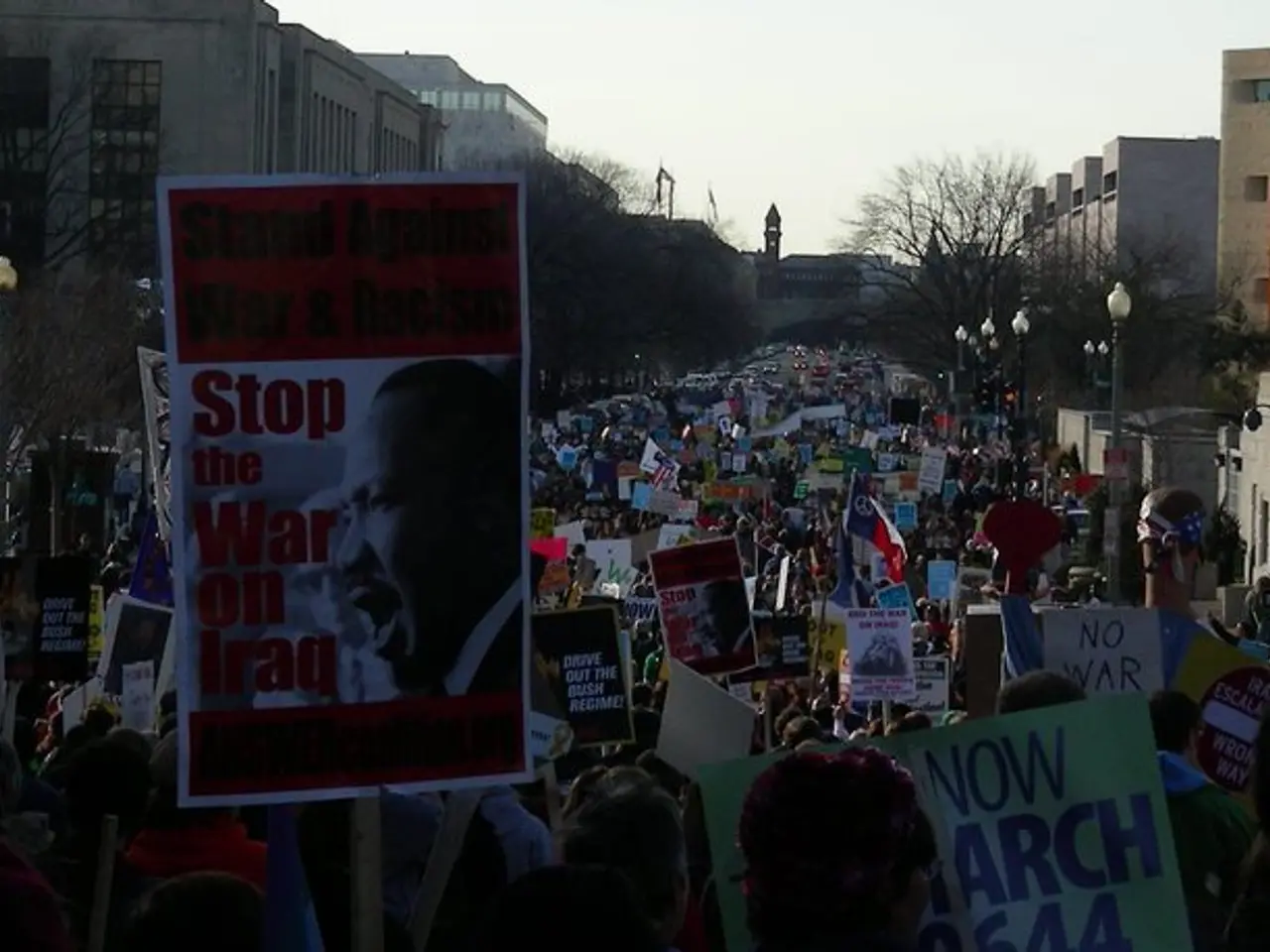Unrest in Serbia intensifies as citizens take to the streets in demonstrations against their administration
Ongoing Violent Protests Rock Serbia
Violent protests against President Aleksandar Vučić's leadership in Serbia have continued for over nine months, escalating significantly since August 2025. The unrest began in November 2024, following the collapse of a newly renovated railway station canopy in Novi Sad, which claimed the lives of 16 people.
Initially, the protests were peaceful, with demonstrators calling for anti-corruption and democratic reforms. However, the movement grew as dissatisfaction with Vučić’s increasingly authoritarian rule and erosion of democratic norms became more apparent. The protests represent the most significant challenge to his regime, which has become electorally vulnerable for the first time.
The violence erupted in mid-August 2025, when pro-government supporters attacked demonstrators in cities like Vrbas and Bačka Palanka, with police often failing to intervene, even allegedly allowing attacks on protesters. In response, protestors pushed back, leading to street clashes. Police have used force, including tear gas and detention, resulting in numerous injuries among both demonstrators and officers.
The government has accused protesters of vandalism and attacks on state property, while allegations of police brutality have surfaced, including beatings and detentions under harsh conditions. These incidents have further fueled outrage among the protesters.
The causes of the protests are rooted in the deadly railway station collapse, perceived as a symbol of government corruption and negligence, years of democratic backsliding and authoritarian governance under Vučić, provocations and violence by pro-government groups, and heavy-handed police responses exacerbating tensions. A youthful, student-led movement demanding accountability and political reform has been at the forefront of the protests.
The situation remains volatile, with nightly clashes and ongoing societal polarization between protesters and regime loyalists. In Belgrade, SNS supporters have hurled fireworks at opposition protesters. President Vučić has vowed to "clean the streets" of protesters, whom he labels as criminals.
The protests have occurred in more than 30 towns across the country, with police barricades and SNS supporters present at many of the rallies. Recently, attacks on pro-government protesters have been reported. Independent experts and opposition figures blame shoddy workmanship and corruption under Vučić’s government for the train station tragedy.
As of now, over five police officers have been injured, and 14 protesters have been arrested during the protests. Violent protests against Vučić's leadership have occurred for the second night in a row in Serbia, with protesters demanding his resignation and new elections. The ongoing protests primarily target Vučić's government, which is accused of being corrupt and authoritarian.
- The ongoing violent protests in Serbia are creating a major upheaval in general news, with war-and-conflicts and crime-and-justice issues also arising from the escalating unrest.
- The political landscape of Serbia is significantly impacted by the continuous protests against President Aleksandar Vučić's leadership, with issues of authoritarian governance, corruption, and democratic reforms becoming central topics in regional and international politics.





